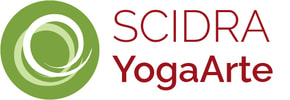REFLEX BALLS, BELTS and BLOCKS
A yoga practice which goes deep down, in order to make stretching easier, as well as muscle opening and releasing tension, so as to make your body more flexible.
Reflex balls help myofascial release. Fascia wraps up our muscles and organs: if it tenses up, our body is blocked. Reflex balls helps us relax tight muscles, improve our bloodstream and our lymph flow, stimulate stretch reflex di in our muscles. Self-massage with reflex balls is an effective method for back pain.
You should relax precise points of the skeleton muscle system, which have hardened and “shortened”, and work upon the deep connective system, which includes ligaments, tendons and bones. Energy stirs around in these areas, and through this practice, you will feel it better during relaxation, in which a pleasant sensation is created, as well as a certain heat release. However, the main feature is a sense of lightness and calm, which we may feel in the whole body.
Belts helps us work upon muscular extensions and joints, thus allowing us to reach an asana both when we cannot perform it with our hands, only, since they still do not finalise the position, and when we need to pull either our legs or our arms more, so as to go moe deeply into the asana.Another way to use belts concerns back bendings, which we may test, both standing and laying down. In such positions as dharunasana, a belt may helps us maintain the position if our hands cannot reach our feet. A belt may be used for several asanas, which cannot be included in specific categories. For instance, it may be used in gomukhasana, if our hands cannot reach behind our back.
Blocks can be used to help those with a stiff spine to try and make progress, without losing heart. Blocks can be very useful for flexibility, balance and alignment.Thanks to Yoga blocks, we may perform alternative versions of classic poses. Blocks can also be great allies in maintaining various asanas for a longer time.
Yoga blocks are often used as an extension of our hands, but also in order to support our back , head and hips, and improve our sense of alignment. A yoga block is very useful for beginners, or for those who have suffered injuries, or other physical limitation. On the other hand, more experienced practitioners may use these tools in order to safely learn performing more challenging poses.
You should relax precise points of the skeleton muscle system, which have hardened and “shortened”, and work upon the deep connective system, which includes ligaments, tendons and bones. Energy stirs around in these areas, and through this practice, you will feel it better during relaxation, in which a pleasant sensation is created, as well as a certain heat release. However, the main feature is a sense of lightness and calm, which we may feel in the whole body.
Belts helps us work upon muscular extensions and joints, thus allowing us to reach an asana both when we cannot perform it with our hands, only, since they still do not finalise the position, and when we need to pull either our legs or our arms more, so as to go moe deeply into the asana.Another way to use belts concerns back bendings, which we may test, both standing and laying down. In such positions as dharunasana, a belt may helps us maintain the position if our hands cannot reach our feet. A belt may be used for several asanas, which cannot be included in specific categories. For instance, it may be used in gomukhasana, if our hands cannot reach behind our back.
Blocks can be used to help those with a stiff spine to try and make progress, without losing heart. Blocks can be very useful for flexibility, balance and alignment.Thanks to Yoga blocks, we may perform alternative versions of classic poses. Blocks can also be great allies in maintaining various asanas for a longer time.
Yoga blocks are often used as an extension of our hands, but also in order to support our back , head and hips, and improve our sense of alignment. A yoga block is very useful for beginners, or for those who have suffered injuries, or other physical limitation. On the other hand, more experienced practitioners may use these tools in order to safely learn performing more challenging poses.
This workshop is suitable to all levels adatto (from beginners to advanced)
Sunday 8 March 2020 h. 17.00/18.30
Book your mat 15€
For those who are not members, a 22% VAT will be applied
Book your mat 15€
For those who are not members, a 22% VAT will be applied
